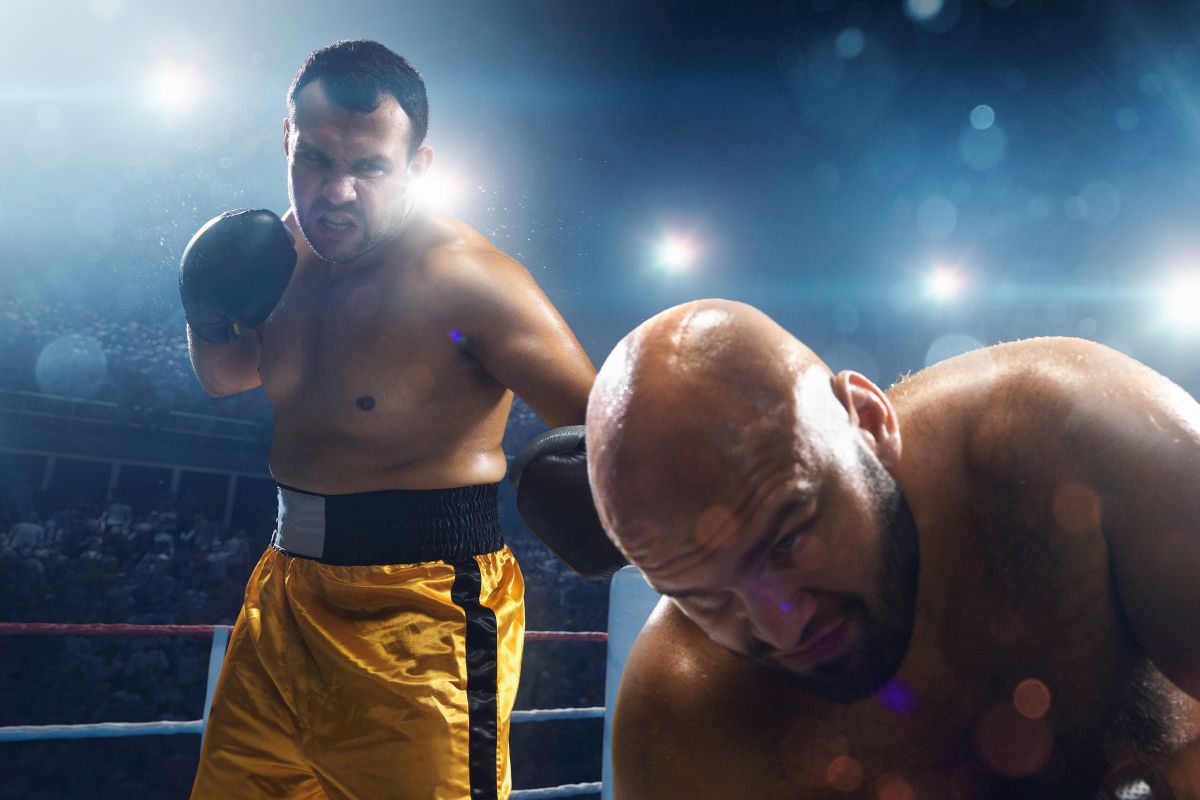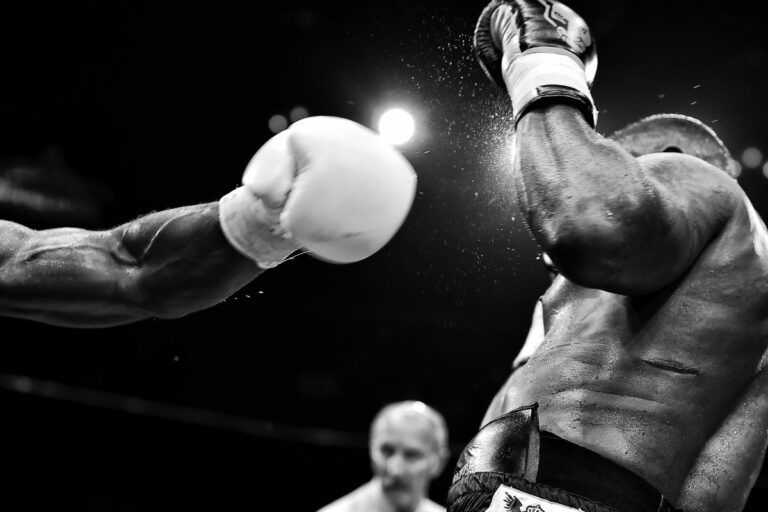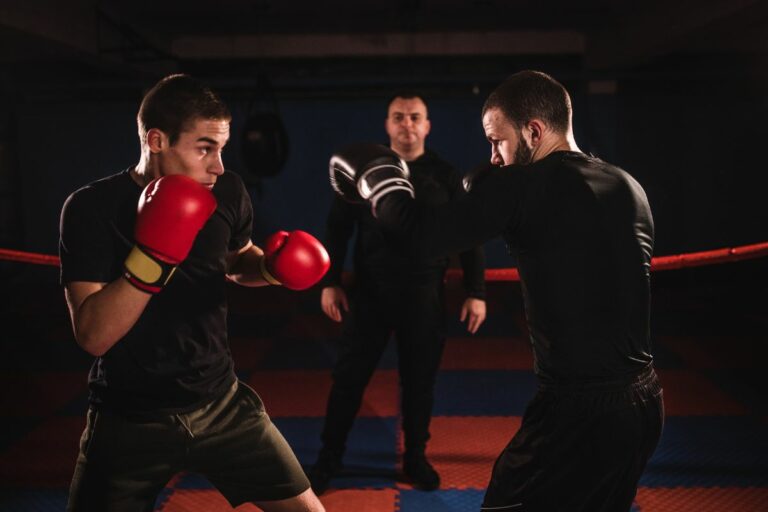What Is A Rabbit Punch In Boxing/MMA? Easily Explained
The number of techniques used in both boxing and MMA can seem endless with a different set of moves being used for a whole array of different styles and techniques.
Some of these techniques can be much harsher than others however and can either only be used when in certain positions, or have been ruled out entirely for the danger they can pose.

The rabbit punch is included in this, infamously known by any combat practitioner as a move that has received quite a bad reputation to its name for the damage and trauma it has caused in the past.
The rabbit punch can still be commonly seen today however whether this be in boxing or MMA, its rocky history has made it a very frowned upon move that has attracted much opposition as the sports have developed and become more refined.
It is crucial for each combatant to know of the rabbit punch since recognising its power and dangers, when and where it is allowed to be used in tournaments and its different use in boxing and MMA is important to understand the technique and whether you should be using it.
What Is A Rabbit Punch?
If you have watched MMA and especially boxing before, you will have seen a rabbit punch probably thrown accidentally.
It is a strike that lands right on the back of the opponent’s head, base of the skull or top of the neck.
Rabbit punches can cause considerable damage to an opponent’s body and even render them paralysed, and therefore today it is an illegal move in just about every fighting sport because of its dangerous repercussions.
This is the same in essentially all versions of MMA where the rabbit punch has been outlawed, however it will still be thrown out now and again especially when fighting on the ground.
For both sports, the better technique to get used to to ensure your strikes are central and flat is to throw the punch from your center, not from your shoulder or elbow.
This allows you to put more weight behind the punch while also directing you to flatter parts of the body such as the jaw, temple or body.
In order to throw a straight punch correctly, practice bringing the shoulder back while at the same time throwing a straight punch with your dominant hand. Keep the elbow in and make sure your right knee is pointing at your left knee.
To increase your power, push off the back foot and twist your hips in the same motion as if you were swinging a baseball bat.
Why Is It Called A Rabbit Punch?
The term is an adaptation of the way rabbits were killed to keep their pelts intact, being a heavy blow with an object to the back of head.
Hunters would often do this with a sharp or blunt weapon, however over time it was even done by hand which would still completely incapacitate a rabbit.
This method was often seen as the most humane way to kill a rabbit. It involved no bloodshed, and did not cause the animal to suffer unnecessarily as other methods involving weapons often did.
When Do Fighters Use A Rabbit Punch?
While it’s an illegal move and should be avoided to prevent serious damage to an opponent and a deduction of points, if you watch any boxing or MMA combatants will still throw it out on occasion, mostly accidentally.
Boxing is a game of head movement, so while boxers will aim for the face and body, sometimes a curved strike can hit an opponent on the back of the head accidentally.
This is most visibly the case in a clinch where both fighters are trying to strike while right next to each other, causing some shots to loop around the back of the head.
In MMA there are far fewer rabbit punches, however when they are thrown by accident it is usually during the ground game and are most common when one fighter is in a mount position.
What Are The Penalties For Throwing A Rabbit Punch?
This essentially comes down to intent. If the referee sees a fighter aim for the back of the head he may warn a combatant, especially if they have shown the intent to do it multiple times.
If a fighter continues using a rabbit punch after this initial warning, the referee will deduct a point, this could even be two points if the strikes are obviously deliberate and could cause real harm.

If a fighter who has been knocked down by a rabbit punch cannot continue, then the one who threw the punch will be disqualified.
An accidental rabbit punch caused by missing an opponent or from a clinch will not get a fighter in any serious danger and they will more often than not be let off, however an intent to do actual bodily harm and incapacitate an opponent is a real offense and will be punished severely.
How Dangerous Have Rabbit Punches Been In The Past?
The rabbit punch was not actually always an illegal move, which is what has given it such a rocky history.
Anyone who has seen the now infamous meeting between Chuck Wepner and Muhammad Ali in 1975 will notice that Werpner spends half of the match aiming for the back of Ali’s head.
Throughout the fight Ali complained to the referee that Werpner was using the rabbit punch constantly, however the referee was incredibly poor in this instance and ignored Ali’s valid complaints.
Ali was then knocked down by a rabbit punch in the ninth round which the ref incorrectly declared as a knockdown, the first one of Muhammad Ali’s career caused by a now illegal move.
The rabbit punch was common for smaller boxers to use against opponents who were tactically better or stronger than them as an easy way to get the upper hand.
However this should never be a last resort even if you are on the backfoot, a strike to the base of the skull is considered dangerous specifically because it can damage the cervical vertebrae and lead to irreversible spinal damage and can even damage the brain enough to the point of killing an opponent instantly.
Rather than relying on illegal tactics, a knockout should always be achieved by aiming for the chin, and in MMA emphasis should be put on submissions, holds and grips more than anything else.
In October 2015 famous boxer Prichard Colon was rushed to hospital straight after a match after experiencing several rabbit punches to the back of the head.
During the fight, Colon was repeatedly pelted by rabbit punches until he was knocked down in the 7th round, and finally went down again in the 9th round from another rabbit punch.
The referee made an incredibly poor decision here in not picking up that Colon’s opponent was obviously suggesting that using a rabbit punch was normal as he was using it so frequently.
He should have been at least warned and definitely deducted points from this, however in the end he actually came out the victor.
Colon was put into a vegetative state after the fight only recovering months later which demonstrates just how severe rabbit punches are.
Another notable incident was in February 2012 in the match between Luis Lazarte and Johnriel Casimero.
If you ask any boxing or fighting enthusiast, they will probably tell you this was one of the dirtiest fights in the history of the sport, and the rabbit punch is right at the center of it.
As soon as the fight began, Lazarte used a rabbit punch on Casimero and proceeded to bite him twice when he was on the ground stunned.
The situation quickly grew out of control as the event caused riots with police having to be called down to the Mar Del Plata in order to handle the commotion.
There have been several other examples of a rabbit punch causing serious harm to fighters which should always be discouraged from the modern sport that should be centered on fair competition and athleticism.
Frequently Asked Questions
Is A Kidney Punch Illegal?
Kidney punches are in a slightly unusual position. Kidneys are vital to our very survival, they filter out body waste and toxins while also helping to regulate our bodily fluids.
A strong enough punch to the kidney can remove these benefits in an instant and could result in kidney failure, a rupture or even a sudden tragic demise.
In MMA these types of shots are very common especially when one fighter is mounted above the other and is moving around a lot to get a clean hit.
Body shots are needed in MMA to drain an opponents stamina and gradually tire them out, so it is seen that shots to the kidney are inevitably going to happen though they are not exactly encouraged.
Kidney shots are however banned in boxing and kickboxing, if they are done intentionally and with enough force.
Because of the amount of sliping and movement in boxing a few punches will inevitably land on the kidney, however a strike is seen as intentional when a strike is thrown to the lower back area with a fighter using a looping hook to specifically aim for the kidney.
Once a referee picks up on this and deems it to be purposeful, he will give the fighter an advisory to ensure they don’t do it again.
A second offense will result in a warning and a points deduction, this could be the removal of either one or two points depending on the referee’s verdict. A third violation picked up by the referee will result in a disqualification immediately.
What Other Strikes Are Illegal?
In terms of boxing, it is illegal to strike an opponent with an open glove, backhand or the side of the hand.
Hitting below the belt is also illegal as strikes in boxing must be straight and fair. Because it is entirely centered on movement and jabbing, holds, kicks and wrestling of any kind is also illegal in boxing.
An interesting technique that is also disallowed and will cost points if done continuously is punching while holding onto the ropes, this is seen to grant the fighter leverage and is therefore unfair and illegal.
Any hits after the bell are also illegal, though these will sometimes be let off unpunished depending on the stance of the referee.
For MMA, there are a few particular techniques and parts of the body which are not to be used. While MMA is very versatile and utilizes most of the body, head butts are illegal in MMA.
Additionally, fighters are not permitted to strike an opponent’s groin and downward strikes with an elbow have also started becoming banned by the Unified Rules of MMA.
Majority of MMA takes place on the ground, however using the knees or feet to kick the head of an opponent on the ground is also illegal and will incur a penalty.
Is A Punch Behind The Ear Illegal In Boxing?
While this can be done quite easily with how much an opponent will move his head during a match, deliberately punching even slightly behind the ear is still considered illegal.
In training this will often be let off since a boxer will need practice to get used to where they can and cannot hit on an opponent’s body.
Have There Been Any Deaths Caused By A Rabbit Punch?
Fortunately, while there have been serious ramifications and bodily harm caused by rabbit punches in boxing and MMA, there have been no recorded deaths which will hopefully remain the case due to their illegal status.
The only human death recorded by a rabbit punch was in a different sport, soccer.
In 2014 soccer referee John Bieniewicz was punched in the back of the head by player Baseel Abdul Amir Saad who was upset at some of the decisions being made.
The punch thrown by Saad struck the left side of Bieniewicz’s neck just below the base of the skull, tearing arteries around the skull and ultimately killing him.
Saad was sentenced to 8 to 15 years for this act and was convicted of second degree murder.
Summary
Rabbit punches have been illegal in the majority of combat sports including boxing and MMA and for good reason.
It originated as a killing technique on helpless creatures, and because of its fatal capability it has been agreed to be left out of sports based on equal opportunity and fairness.
When watching a fight a rabbit punch will probably be seen on the odd occasion whether there is a clinch or if one combatant is in a mounting position and is trying to land an accurate shot.
The key point to remember however is that it should never be intentional, with such a variety of moves in boxing and MMA there is no need to resort to moves that can unfairly stun an opponent just to get an advantage.
Therefore if you end up landing a light hit on the back of an opponent’s head then there is no need to worry and the referee will probably let you off, just try to avoid reaching around the head for future fights and especially tournaments.







